removed account4
Subscriber
- Joined
- Jun 21, 2003
- Messages
- 29,832
- Format
- Hybrid
thanks brian ...
OK, so the let's assume you take a reading from a 18% gray card, and lets assume the subject is being illuminated by an external source and not generating light itself and furthermore that the reflectance of the subject is not specular. So, 18% reflectance is zone V, 36% reflectance is zone VI, 76% reflectance is zone VII, and 152% reflectance is zone VIII. However, 152% reflectance is a physical impossibility, so you should never need anything much above zone VII.
Do I have this right?
Reflectance is based on the equivalence of a Lambertian surface or perfect diffusing surface. A 100% reflectance is not the same as 100% reflection. To calculate the value of the luminance from a Lambertian surface, you need to divide by pi. Semi-specular surfaces can easily exceed 100% reflectance. Specular surfaces, light sources, the sky, and the sun can easily exceed 200% reflectance.
What is the meaning of "q" in the equations?
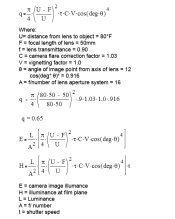
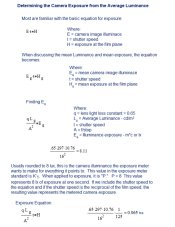
This is what I believe to be the calculation for exposure with my spot meter.
The meter is designed on the assumption that the midpoint of the film characteristic curve is receiving an exposure level of 0.1 lux.seconds.
The formula used to calculate exposure is :
2^EV= (B*S)/K where
B= luminance in cd/m2
S=ISO sensitivity of film
K=calibration constant (whatever it is, 12.5 or 18 etc depending on the meter)
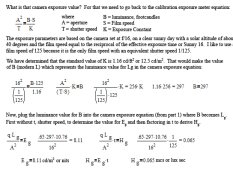
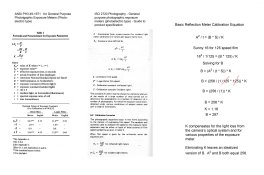
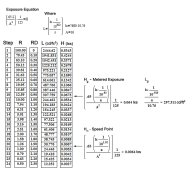
| Photrio.com contains affiliate links to products. We may receive a commission for purchases made through these links. To read our full affiliate disclosure statement please click Here. |
PHOTRIO PARTNERS EQUALLY FUNDING OUR COMMUNITY:  |